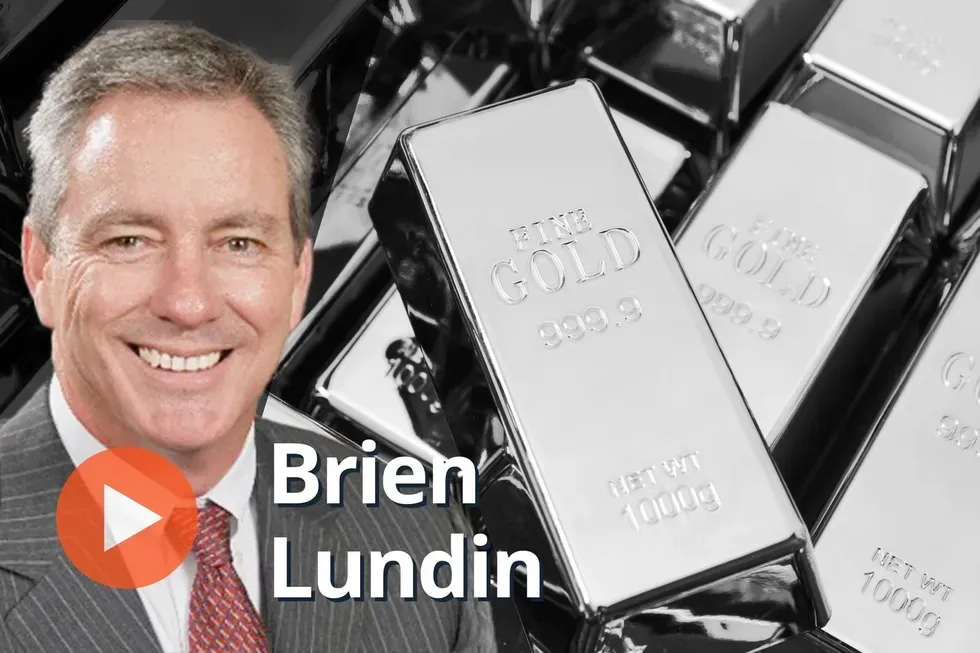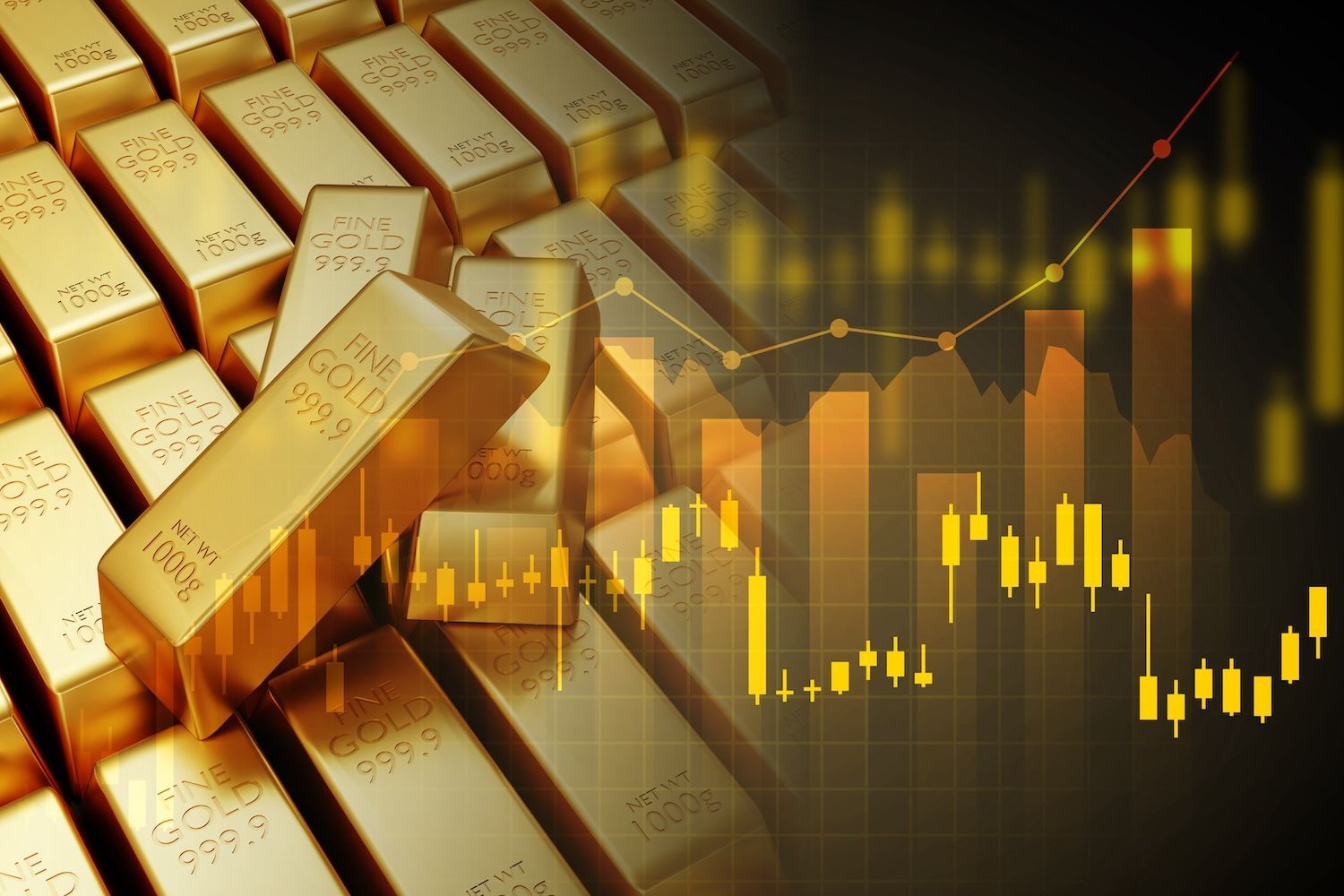
April 23, 2025

Sign up to get your FREE
Mount Hope Mining Investor Kit
and hear about exciting investment opportunities.
- Corporate info
- Insights
- Growth strategies
- Upcoming projects
GET YOUR FREE INVESTOR KIT
The Conversation (0)
05 December 2024
Mount Hope Mining
Investor Insight
Mount Hope Mining’s strategic location in the prolific and resource-rich Cobar Basin, which has seen increased activity in recent years, signifies the company’s compelling investment proposition.
Overview
Mount Hope Mining (ASX:MHM) is an Australian resource company specializing in copper and gold exploration. With its flagship project located in the Cobar Basin of New South Wales, Australia, the company leverages the region's rich mining history and underexplored potential. On August 30, 2024, Mount Hope transitioned to a public company to attract investments for its ambitious mineral exploration goals.
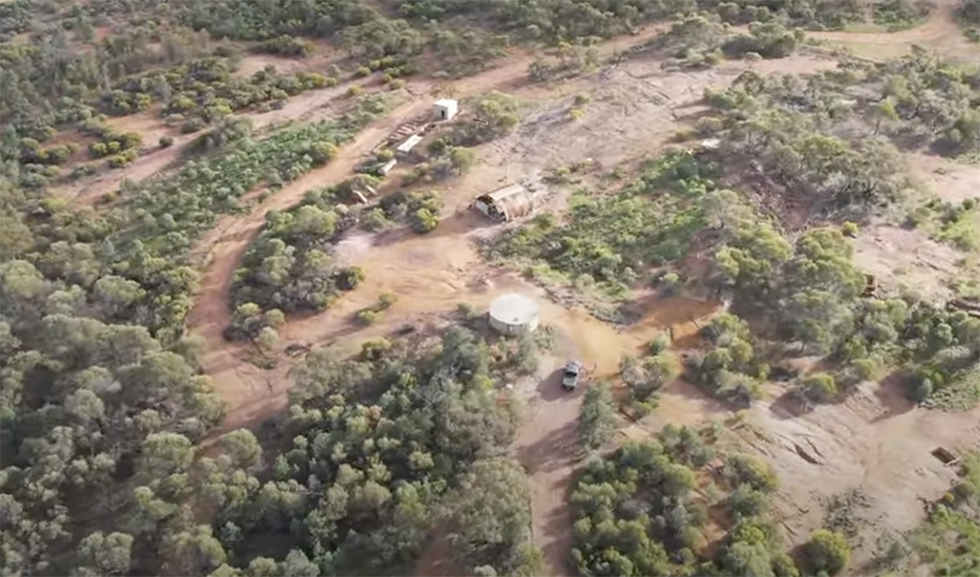
Mount Hope Mining's acquisition of Fisher Resources, a wholly-owned subsidiary of Unico Silver Limited, has provided it with full control over the Mount Hope project. This project spans four tenements covering approximately 175 square kilometers, located in the southern Cobar Basin, a region with a longstanding history of copper and gold mining dating back to the 1870s.
The Cobar Basin has seen a flurry of significant mining activities in recent years, underscoring the region's robust potential for polymetallic resource development. In August 2024, Polymetals Resources (ASX:POL) finalized the acquisition of the Endeavor Mine, located 40 kilometers north of Cobar, which boasts JORC-compliant resources of 16.3 million tonnes grading 8 percent zinc, 4.5 percent lead, and 84 grams per ton (g/t) silver. In 2023, Metals Acquisition (NYSE:MTAL) successfully acquired the CSA copper mine from Glencore, further signalling the growing investment attractiveness of the Cobar Basin as a major hub for copper production.
These activities highlight a dynamic and competitive landscape that Mount Hope Mining can leverage for its own exploration strategy.
The strength and vision of Mount Hope Mining's leadership are critical to its success. The company boasts an experienced and dynamic board and management team, each member bringing a wealth of expertise in mineral exploration, corporate governance, and strategic planning. Their collective experience in mining, resource development, and financial oversight ensures the company is well-equipped to meet its objectives.
Company Highlights
- Mount Hope Mining is a copper and gold exploration company based in Australia
- The company holds 100 percent ownership of the Mount Hope project in the prolific Cobar Basin, comprising four tenements spanning 175 sq km
- The Cobar Basin has long history of copper and gold mining dating back to the 1870s, and recently experiencing increased M&A activity.
- Mount Hope has identified key zones of interest within the project and will be the target for near-term phased exploration
- The company’s experienced and dynamic board and management team, bring a wealth of expertise in mineral exploration, corporate governance, and strategic planning.
Key Project
Mount Hope
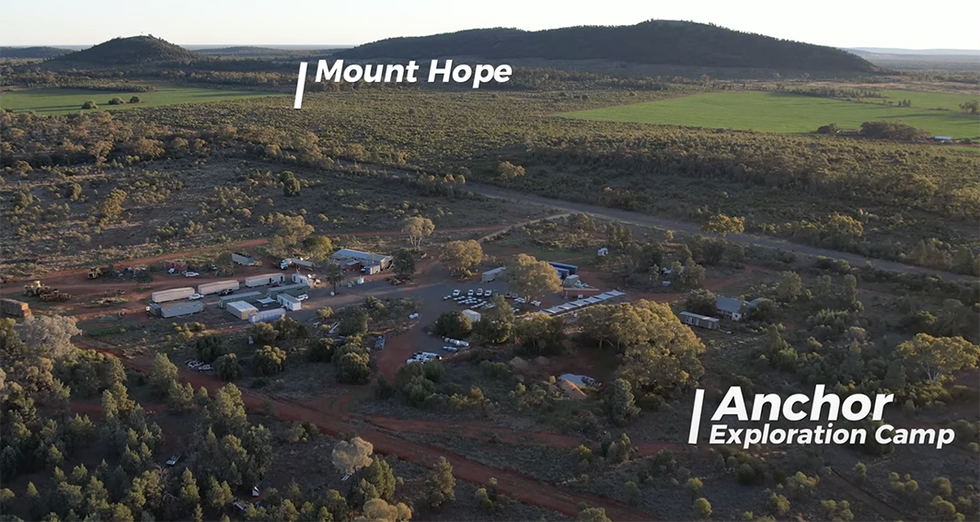
The Mount Hope project is Mount Hope Mining’s flagship exploration initiative, located in the southern Cobar Basin of New South Wales, Australia. This project spans approximately 175 square kilometers across four granted exploration tenements: EL6837, EL8058, EL8290 and EL8654. The region is historically significant for its rich copper and gold deposits and has contributed substantially to Australia’s mining output since the 1870s. Despite its long-standing mining heritage, the southern Cobar Basin remains underexplored, presenting a unique opportunity for Mount Hope Mining to utilize modern exploration techniques to uncover untapped resources.
The project area encompasses several historical mining sites, including the Mount Hope, Comet and Great Central copper mines, alongside the Mount Solitary and Solar gold mines. These sites, although historically productive, have seen limited contemporary exploration, leaving substantial potential for discovering residual and new deposits.

Geology and Targets
The Mount Hope project is characterized by volcanic and sedimentary sequences with structural features conducive to hosting polymetallic deposits, particularly copper and gold. Fault zones and folding within the tenements act as pathways for mineralization, creating promising exploration targets.
Mount Hope Mining has identified key zones of interest within the project area, including Mount Hope East, Black Hill, Main Road East, Little Mount Solitary, and the Mount Solitary to Solar Trend. These targets are prioritized for exploration based on historical mining data and geophysical anomalies. The company plans to implement a phased approach to exploration, beginning with geophysical and geochemical surveys to refine target zones, followed by drilling campaigns to confirm mineralization and assess the economic viability of the deposits.

Strategic Location
The Mount Hope project benefits from its strategic location within the Cobar Basin, an established mining district with access to infrastructure and services. The recent resurgence of mining activity in and around the Cobar Basin, as demonstrated by Polymetals Resources’ acquisition of the Endeavor mine, and Metals Acquisition’s purchase of the CSA copper mine, underscores the region’s significance as a hub for resource development.
Mount Hope Mining aims to build on this momentum, leveraging both historical data and cutting-edge exploration methodologies to maximize the project’s potential. With its focus on copper and gold, commodities essential to green technologies and global markets, the Mount Hope project is well-positioned to contribute to the growth of Mount Hope Mining and the broader Australian resource sector.
Management Team
Fergus Kiley – Managing Director and CEO
Fergus Kiley plays a pivotal role in driving Mount Hope Mining’s exploration and growth strategies. He previously served as Senior Geologist and Technical Business Development Lead at Wyloo, one of Australia’s largest private natural resources investment groups. This role honed his expertise in exploration, geological modeling and project evaluation. Kiley also serves on the board of Grand Gulf Energy (ASX:GGE) and has over a decade of experience managing exploration programs for various ASX-listed companies. His leadership at Mount Hope focuses on leveraging modern exploration techniques and building partnerships to unlock the potential of the Mount Hope project.
Ben Phillips – Non-executive Chairman
Ben Phillips provides strategic oversight and governance to Mount Hope Mining. Appointed on July 5, 2024, he plays a vital role in ensuring the board operates effectively and aligns with the company’s objectives. Phillips’ leadership in other ventures and his focus on strong corporate governance bring additional credibility to Mount Hope’s public presence. His insights into the mining sector and his strategic vision position the company for sustainable growth.
Todd William – Non-executive Director
Todd Williams brings significant expertise in mining exploration and operations, particularly within the Cobar Basin. He is currently the managing director of Unico Silver (ASX:USL) and a Non-executive director of Orpheus Uranium (ASX:ORP). As the former owner of the Mount Hope project through Unico, William's historical knowledge of the tenements is an invaluable asset. His extensive work in the region strengthens Mount Hope’s technical and operational strategies.
Keep reading...Show less
Advancing a copper and gold-rich asset in the prolific Cobar Basin of New South Wales
28 July
Drill Contract Awarded for Mt Hope Maiden Program
27 July
Quarterly Report and Appendix 5B June 25
17 July
Drill permits received for maiden Mount Hope drill program
14 July
Targets Defined for Maiden Drill Program
15 August
Editor's Picks: Gold Tariff Threat Ends, Price Reacts to Fresh Inflation Data
The gold price cooled off this week as tariff-related uncertainty reached a resolution.
The yellow metal was thrust into headlines late last week when US Customs and Border Protection told a Swiss refiner that 1 kilogram and 100 ounce gold bars would be subject to Trump administration tariffs that went into effect on August 7.
Gold is one of Switzerland's top exports to the US, and with the country facing a 39 percent levy, questions were rife about what the impact could be. Clarification came on Monday (August 11), when US President Donald Trump said on Truth Social that gold "will not be tariffed."
While the news calmed market participants, Keith Weiner of Monetary Metals believes the incident could have long-term impacts. He said the tariff confusion caused the spread between spot gold and gold futures to blow out, creating difficulties for entities using the market to hedge.
Here's how Weiner explained it:
"Once you've put the scare into everybody, you can't just say, 'Oh, sorry, just kidding.' You can't really do that. And so now we've done damage, and we'll see what happens to that spread over time. We'll see how users of the futures market adapt.
"There are other markets in the world that would be competing for this hedging business — maybe it moves to Singapore, maybe it moves to Dubai, maybe it moves to London, and the US loses not only a little more trust, but also a little bit of volume on what had been the biggest, or what is currently the biggest, futures market."
This week also brought the release of US consumer price index (CPI) and producer price index (PPI) data. On a seasonally adjusted basis, CPI for July was up 0.2 percent from the previous month and 2.7 percent from the year-ago period. Meanwhile, core CPI, which excludes the food and energy categories, was up 0.3 percent month-on-month and 3.1 percent from the same time last year.
While those numbers were largely in line with expectations, seasonally adjusted July PPI figures came in hotter than expected, rising 0.9 percent month-on-month compared to Dow Jones' forecast of 0.2 percent. Core PPI increased 0.9 percent from June compared to an estimated rise of just 0.3 percent.
Speaking about the implications of the data, Danielle DiMartino Booth of QI Research said it shows companies aren't yet passing tariff-related price increases on to consumers.
This is what she said about how these circumstances could develop:
"I do think that we will see where companies feel they can push through price increases — I think we'll see that. We saw quite a bit of food inflation in the PPI, and when you're talking about things like essentials, and especially with very, very low-margin types of sales, we could see what we call the substitution effect begin, where households end up buying other things. The classic is always that they trade down from steak to ground beef, or trade down from beef to chicken.
"We're going to see whether or not that plays out again."
While the PPI data has slightly dampened expectations that the US Federal Reserve will cut interest rates when it meets in September, CME Group's (NASDAQ:CME) FedWatch tool still shows a strong probability of a reduction at that time.
Bullet briefing — CATL closes mine, Mitsubishi invests in copper
CATL temporarily closes lithium mine
Contemporary Amperex Technology (HKEX:3750,SZSE:300750), better known as CATL, said on Sunday (August 10) that it will halt production at a lithium mine in China for at least three months.
Sources familiar with the matter told Bloomberg that CATL, which is the world's largest electric vehicle battery maker, failed to extend a key mining permit. The company is reportedly in talks about a renewal, but is prepared for a months-long shutdown.
Share prices of lithium miners rose on the news, buoyed by expectations that the CATL mine closure will help reduce oversupply. Excess output has caused Chinese lithium prices to drop 80 percent since the end of 2022, and investors are keen to see a turnaround for the beleaguered battery metal.
Hudbay, Mitsubishi team up on copper
Mitsubishi (TSE:8058) is set to acquire a 30 percent stake in Hudbay Minerals' (TSX:HBM,NYSE:HBM) Arizona-based Copper World subsidiary for US$600 million.
Hudbay called Mitsubishi its "strategic partner of choice," while Mitsubishi said the investment will help advance its copper growth plans. A feasibility study is in the works for Copper World, and a definitive feasibility study is expected in mid-2026.
Hudbay shareholders reacted positively to the news, which comes on the back of a strong focus on copper supply after last month's announcement of a 50 percent tariff on US imports of semi-finished copper products and intensive copper derivative products. The company projects that Copper World will result in a direct $1.5 billion investment into the US critical minerals supply chain.
Want more YouTube content? Check out our expert market commentary playlist, which features interviews with key figures in the resource space. If there's someone you'd like to see us interview, please send an email to cmcleod@investingnews.com.
And don't forget to follow us @INN_Resource for real-time updates!
Securities Disclosure: I, Charlotte McLeod, hold no direct investment interest in any company mentioned in this article.
Editorial Disclosure: The Investing News Network does not guarantee the accuracy or thoroughness of the information reported in the interviews it conducts. The opinions expressed in these interviews do not reflect the opinions of the Investing News Network and do not constitute investment advice. All readers are encouraged to perform their own due diligence.
Keep reading...Show less
15 August
Brien Lundin: Gold at New US$3,000 Floor, Silver Supply Crunch Coming
Brien Lundin, editor of Gold Newsletter, shares his thoughts on gold and silver prices, as well as what types of stocks he's focusing on in these sectors.
In his view, the precious metals are set up for a new era.
Click here to sign up for the New Orleans Investment Conference, hosted by Lundin.
Don't forget to follow us @INN_Resource for real-time updates!
Securities Disclosure: I, Charlotte McLeod, hold no direct investment interest in any company mentioned in this article.
Affiliate Disclosure: The Investing News Network may earn commission from qualifying purchases or actions made through the links or advertisements on this page.
Keep reading...Show less
15 August
OPINION — Goldenomics 103: Gold Protects and Performs
This opinion piece was submitted to the Investing News Network (INN) by Darren Brady Nelson, who is an external contributor. INN believes it may be of interest to readers and has copy edited the material to ensure adherence to the company’s style guide; however, INN does not guarantee the accuracy or thoroughness of the information reported by external contributors. The opinions expressed by external contributors do not reflect the opinions of INN and do not constitute investment advice. All readers are encouraged to perform their own due diligence.
By Darren Brady Nelson
US President Donald Trump’s “Liberation Day” tariffs certainly caused quite the stir in the markets on April 2.
Gold dropped about 6 percent, and silver 12 percent. A week later, a pause was announced, which ended on August 1. Gold and silver have since risen approximately 11 percent and 24 percent, respectively.
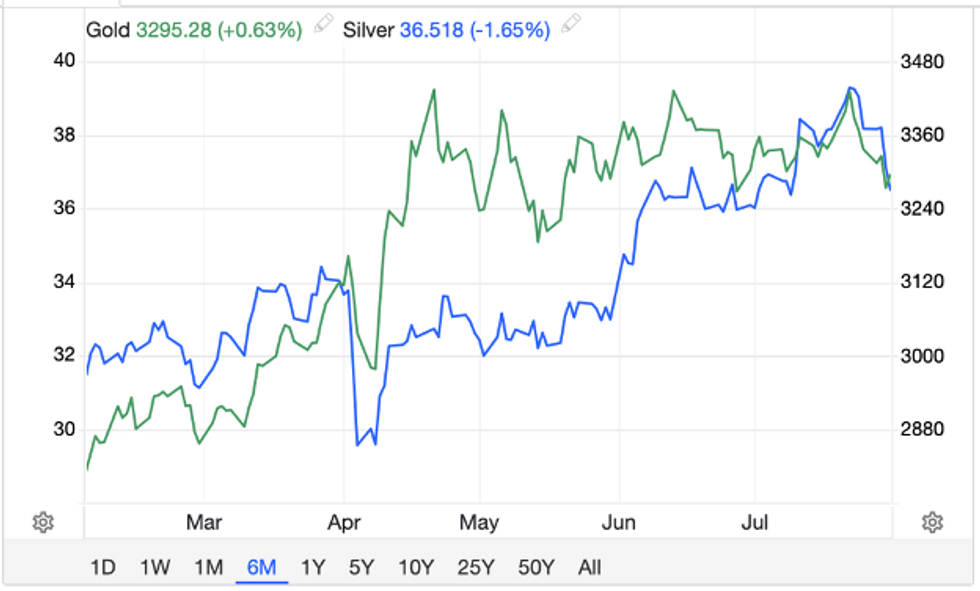
Six month gold and silver price performance.
Source: Trading Economics (gold) and (silver).
Unless you are a professional, or even amateur, trader, it is best to look at gold and silver investment with a perspective of years or decades, rather than just days, weeks or even months. Since the start of the COVID-19 panic in March 2020, gold and silver have exploded 123 percent and 192 percent.
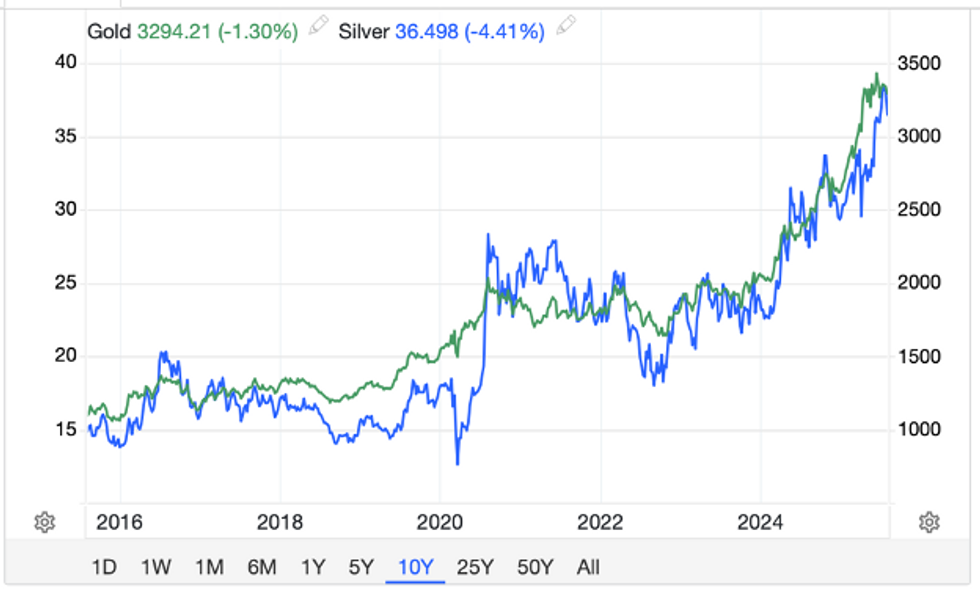
10 year gold and silver price performance.
Source: Trading Economics (gold) and (silver).
In the shorter term, the gold price is driven by what economist John Maynard Keynes called “animal spirits.” In the longer term, it is driven by “monetary spirits.” And not just as protection, but also for performance. The Presidential Gold Guide highlights both in chapters four and five.

Source: Fisher Liberty Gold.
Gold unsurprisingly protects
Economist and investor Mark Skousen has wisely noted that: “Since we left the gold standard in 1971, both gold and silver have become superior inflation hedges.” Gold has more than countered the results of inflation, as measured by CPI, and the drivers of inflation, as measured by M3.
And the numbers back that up. The Gold Protects chart below compares the gold price, CPI and M3 in terms of cumulative growth of each from 1971 to 2025. That is throughout the whole era of gold as an investment, which officially started in 1974 once private ownership was restored.
During this era, gold grew by 541 percent, CPI by 214 percent and M3 by 384 percent. Annual average growth for gold was 10 percent, CPI at 4 percent and M3 at 7 percent. Maximums were 92 percent, 14 percent and 29 percent, respectively. CPI only failed to grow twice, ie. 0 percent in 2009 and 2015. M3 decreased twice, by -4 percent in 2023 and -6 percent in 2024.
Gold surprisingly performs
The highly respected In Gold We Trust (IGWT) report states: “When dealing with the specific level of gold allocation, it is advisable to differentiate between safe-haven gold and performance gold. The Big Long strategy emphasizes the potential of performance gold in the coming years.”
IGWT thus recommends an investment portfolio "rule of thumb" that includes 15 percent in “safe-haven gold” and 10 percent in “performance gold.” The Gold Performs chart below compares gold price, S&P 500 and nominal GDP in terms of cumulative growth of each from 1971 to 2025.
Gold grew by 541 percent, the S&P 500 by 484 percent and GDP by 339 percent. Annual average growth for gold was 10 percent, with the S&P 500 at 9 percent and GDP at 6 percent. Maximums were 92 percent, 45 percent and 14 percent, respectively. Gold did have a higher standard deviation of 27 percent, compared to 17 percent for the S&P 500 and 3 percent for GDP.
Animal and monetary spirits
Gold protects as a hedge or safe haven, not just from inflation, but from the flip side of that same coin of the boom-bust cycle. Both are driven, in the longer term, not by “animal spirits,” but by “monetary spirits.”
Inflation is when money inflation has a widespread impact as price inflation. A bubble is when money increases have a more concentrated impact such as in certain asset values. The bubble eventually bursts when “monetary spirits” are finally reined in by monetary realities.
I say “monetary spirits” because of the role of fiat money, as indicated by, say, M3. When money supply outstrips money demand in a localized way, then that is a bubble, and when in a general way, that is inflation.
The former shows up in certain asset, wholesale and/or producer prices, whilst the latter shows up in CPI. Asset prices include the S&P 500. But nominal GDP is also "ginned up" as it is ultimately a price times quantity measure as well. Price is expressed in money terms.
Conclusion
Gold can have ups and downs, as standard deviation indicates, due to the “animal spirits” of fear and uncertainty, that tend to be daily, weekly or monthly. Yet gold both protects and performs due to the “monetary spirits” of inflation and boom-bust, which tend to be decennially.
In particular, gold performs when the S&P 500 does not, like in the aftermaths of the 2001/2002 dot-com collapse, the 2008/2009 global financial crisis and 2020/2021 COVID-19 lockdowns.
Therefore, when it comes to gold, “follow the money” of central bank “money printing” and fractional reserve bank “fountain pen money,” for both superior inflation protection and boom-bust performance.
And besides, Skousen rightly "begged the question" as follows: “Gold and Silver have always had value, never gone to zero. Can you say the same for stocks and bonds?”
About Darren Brady Nelson
Darren Brady Nelson is chief economist with Fisher Liberty Gold and policy advisor to The Heartland Institute. He previously was economic advisor to Australian Senator Malcolm Roberts. He authored the Ten Principles of Regulation and Reform, and the CPI-X approach to budget cuts.
Click here to read Goldenomics 101: Follow the Money, and here to read Goldenomics 102: The Shadow Price of Gold.
Keep reading...Show less
15 August
Horn Island Mining Lease Application Registered
14 August
Gold Majors Ride Price Surge to Strong Q2 Earnings
The world’s top gold producers delivered a string of robust second-quarter results, buoyed by record prices and resilient operations as investors continue to seek refuge in the yellow metal amid growing economic uncertainty.
With spot gold trading above US$3,400 per troy ounce, just shy of its April all-time high of US$3,448.50, the world’s largest gold producers posted higher earnings and stronger cash flow in their recent Q2 results.
Below is a breakdown of how a few major players fared in Q2.
Barrick nearly doubles profit margins
Barrick Mining (TSX:ABX,NYSE:B) formerly Barrick Gold, reported a 97 percent year-on-year jump in net income to US$1.25 billion for the quarter, compared to US$634 million a year earlier.
Earnings per share rose to US$0.47 while operating cash flow in the first half reached US$2.5 billion, up 32 percent from 2024. Free cash flow more than doubled to US$770 million, supported by higher commodity prices.
Gold production climbed 5 percent from the first quarter, while copper output surged 34 percent, led by strong performance at Zambia’s Lumwana mine. Nevada Gold Mines boosted output by 11 percent, while Pueblo Viejo in the Dominican Republic posted a 28 percent increase as expansion work in the site advanced.
“From the ramp-up at Goldrush to the progress at Pueblo Viejo, Lumwana and Reko Diq, not to mention the transformational potential of Fourmile, we’re demonstrating the strength and depth of our portfolio,” president and chief executive Mark Bristow said in the recent Q2 report.
The company also recently agreed to sell its Alturas Project in Chile to a Boroo subsidiary for US$50 million upfront plus a royalty, with proceeds earmarked for funding future ventures
Kinross outpaces gold price gains
Kinross Gold Corporation (TSX:K,NYSE:KGC) posted record attributable free cash flow of US$646.6 million in the second quarter, alongside operating cash flow of US$992.4 million. Adjusted net earnings jumped to US$541 million from US$174.7 million a year earlier.
Further, the company achieved a 21 percent margin increase from the first quarter, outpacing the 15 percent rise in gold prices over the same period.
“Our portfolio of mines continued to perform well during the quarter contributing to a strong first half of the year and positioning us well to achieve our full-year guidance,” CEO J. Paul Rollinson said.
Kinross said that it expects to produce 2 million gold-equivalent ounces in 2025 at an average production cost of US$1,120 per ounce.
Paracatu in Brazil was the company’s top-producing asset, while Tasiast in Mauritania began mining the Fennec satellite deposit. US-based Bald Mountain also reported higher output at lower costs.
The company also advanced key projects, including its Great Bear exploration program in Ontario, engineering work at Round Mountain Phase X in Nevada, and drilling at the Curlew Basin project in Washington.
Agnico Eagle delivers, shares gain
Agnico Eagle's (TSX:AEM,NYSE:AEM) operational consistency and cost control helped drive a six-day share price rally, culminating in a 10.06 percent gain over the past week.
In the second quarter, the company produced 866,029 ounces of gold, maintaining full-year guidance of 3.3 to 3.5 million ounces. Adjusted earnings per share came in at US$1.94, prompting analysts to raise 2025 profit forecasts by US$0.70 to US$6.94.
Analysts cited the company’s steady performance despite rising unit costs, noting its appeal as a defensive play in the sector. Bank of America raised its price target to US$173 due to rising optimism about the firm’s growth prospects.
Newmont rides sector momentum
Newmont (TSX:NGT,NYSE:NEM) posted higher sales and net income for the quarter while authorizing a new share repurchase program and declaring a quarterly dividend.
The miner also renewed a key lease in Ghana. Shares rose 36 percent over the last quarter, outpacing the US Metals and Mining industry’s 24.1 percent return.
The performance came despite a drop in the company’s gold production. Rather, Newmont underscored the role of shareholder returns and strategic asset moves in supporting investor sentiment. Over the past three years, Newmont has delivered a total shareholder return of 63.75 percent.
Gold outlook: Gold shines during volatility
The sector’s strong quarter unfolded against a favorable macro backdrop.
Gold, which has gained about 30 percent year-to-date, has been buoyed by safe-haven flows. The metal’s latest rally began after spot prices dipped to US$3,311.80 in early August, then climbed back above US$3,418 by the first week of August..
The Federal Reserve cut rates by a full percentage point in late 2024 but has held steady this year, citing the need for more data on how tariffs affect inflation. Lower rates generally enhance gold’s appeal by reducing the opportunity cost of holding non-yielding assets..
Don't forget to follow us @INN_Resource for real-time news updates!
Securities Disclosure: I, Giann Liguid, hold no direct investment interest in any company mentioned in this article.
Keep reading...Show less
Latest News

Sign up to get your FREE
Mount Hope Mining Investor Kit
and hear about exciting investment opportunities.
- Corporate info
- Insights
- Growth strategies
- Upcoming projects
GET YOUR FREE INVESTOR KIT
Latest Press Releases
Related News
TOP STOCKS
American Battery4.030.24
Aion Therapeutic0.10-0.01
Cybin Corp2.140.00


